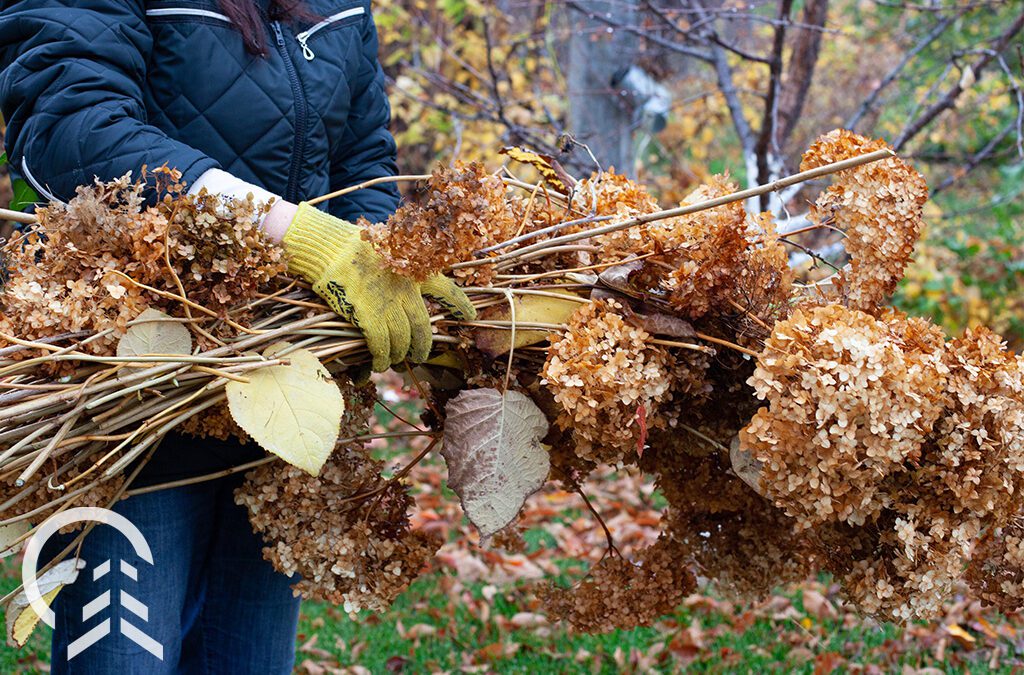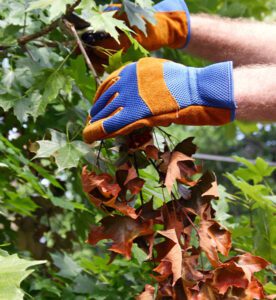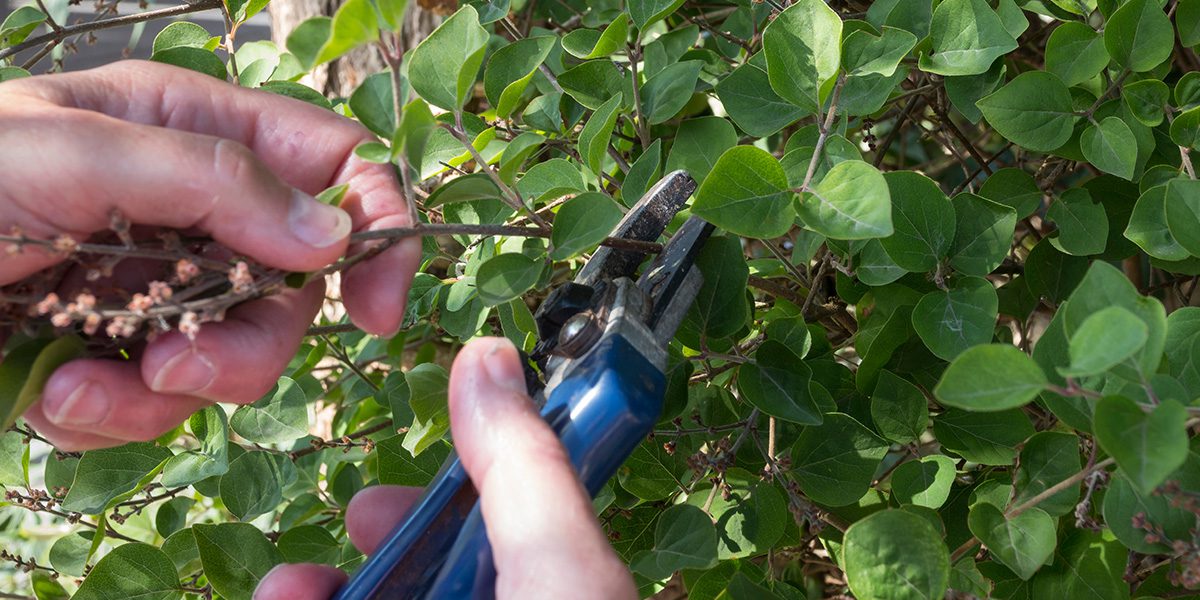Timing your pruning activities is crucial for keeping your plants in optimal health.
Pruning is one of those common garden chores that never seems to disappear from our checklist, especially in the fall. After all, as we’re preparing the rest of our garden for winter, it makes sense to tidy up our trees, shrubs, and perennials as well, right? However, before you start hacking away with your clippers, it’s important to know which of your plants can be pruned now and which should remain intact until next spring. Luckily, that’s where we come in! To help you cut away the common myths from the facts, we’ve put together this fall pruning guide so you can get your garden ready for winter with confidence this year.
Introduction to Fall Pruning in Illinois
Contrary to common belief, fall is no the time to do significant pruning. In fact, pruning in the fall makes many species susceptible to winter damage and can inhibit your plants’ growth next season, especially on shrubs that have already set blossoms on their branches. However, with that said, fall is still an ideal time to remove dead, damaged, and diseased branches, also known as the “triple D.”
Diseased, Dead, and Damaged Pruning Tips
Any branch that’s dead, damaged, or diseased poses a potential danger to your plant. These branches harbor fungi and pests that can multiply and spread. They also break with heavy snowfall, potentially causing damage to your property. Luckily, fall is an excellent time to clear away these triple-D problems before the winter.
Pro Tip:
When pruning diseased branches, cut six inches up the branch from the infected area and sanitize your clippers after every cut. This protocol will help you avoid spreading diseases throughout the rest of your landscape.
Timing Matters: The Best Months for Pruning Trees and Shrubs
Timing your pruning activities is crucial for keeping your plants in optimal health. To help you out, here are the best times to prune these common trees and shrubs:
- Evergreens: The best times for pruning evergreens are late winter, early spring, or mid-summer if necessary. Pruning evergreens in the fall makes them susceptible to winter burn, as they don’t have enough time to seal their wounds before winter, resulting in a significant loss of moisture. As a result, you’ll have brown needles and branches where you pruned come springtime.
- Shrubs that Bloom on Old Growth: The best time to prune old-growth shrubs is immediately after they flower in late spring or early summer. These shrubs set their spring blossoms during the previous summer, meaning if you prune in fall, you’ll be cutting away next spring’s flowers. This category of shrubs includes lilacs, forsythia, azalea, weigela, and rhododendrons.
- Shrubs That Bloom on New Growth: These shrub varieties, which include dogwoods, burning bushes, ninebarks, honeysuckles, and barberries, form their blossoms on new growth in the spring, so you won’t be pruning away next year’s flowers if you prune in the spring. However, we still don’t recommend pruning these shrubs in the fall, as it can interfere with their dormancy and make them susceptible to winter die-back. Instead, wait until late winter or early spring.
- Roses: Poda roses in the fall makes them susceptible to die-back over the winter, so only prune select canes in the fall that are at immediate risk of being broken by heavy snowfalls. Otherwise, leave your roses alone until late winter or early spring.
- Fruit Trees and Shrubs: Like the other shrubs mentioned above, it’s best to prune your fruit trees and shrubs in the late winter or early spring. That way, you minimize the time they spend with open wounds before they start growing again in spring.
- Birch and Maple Trees: The best time to prune birches is late summer or early fall, while maples prefer to be pruned in mid-summer. These trees produce a lot of sap flow in the late winter and early spring, so avoid pruning them then to prevent excessive sap loss. Instead, enjoy their gift of sap by tapping them and making syrup in the late winter.
- Oaks: Oaks are best pruned in the winter months to minimize the risk of transmitting oak wilt disease.
Pro Tip:
As a general rule, you can safely prune most trees and shrubs up to six weeks before the first frost date. After that point, it’s best to stop pruning and only focus on dead, diseased, and damaged branches.
Perennial Fall Pruning Guide for Illinois
Even though fall is not the time for pruning trees and shrubs, you can safely trim back all your herbaceous perennials to the ground. In fact, we recommend it, especially if you have any perennials with fungi on the leaves, such as powdery mildew, which you don’t want spreading over winter.
Which Perennials Should I Leave Standing in The Fall?
Ornamental grasses and other perennials strong enough to stand in the snow can be left for winter interest. We also recommend leaving perennials with seedy flowerheads—like black-eyed Susan’s, coneflowers, hyssops, bee balm, and liatris—as winter food sources for non-migrating native birds.
We hope this guide has cleared up any confusion you may have had regarding fall pruning, and that you’re ready to confidently tackle the rest of your garden cleanup this season! For more guidance on fall pruning or winter plant care, come chat with one of our friendly experts at our garden centers in Bloomingdale and Carpentersville!
Platt Hill Nursery es el principal centro de jardinería y vivero de Chicago.





